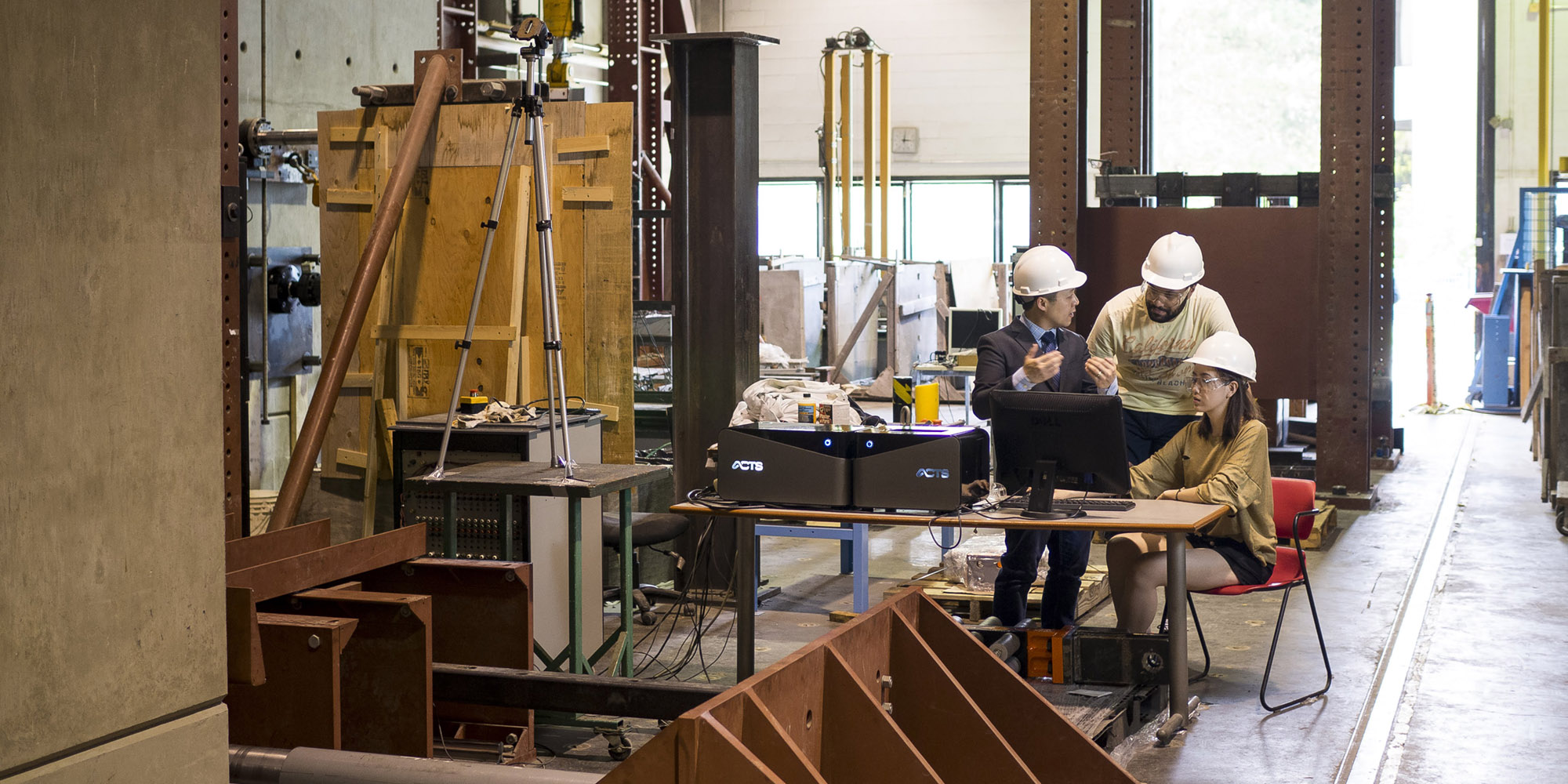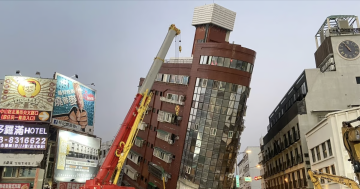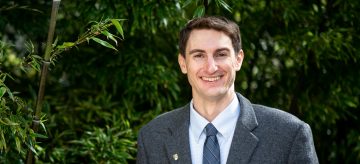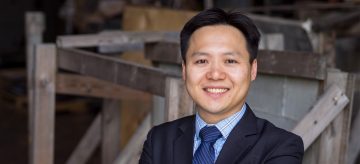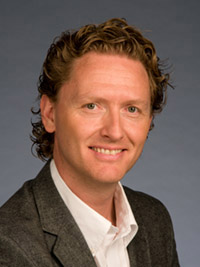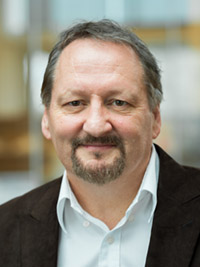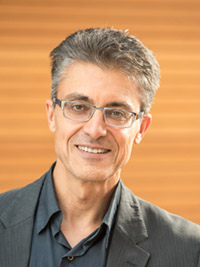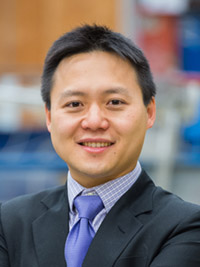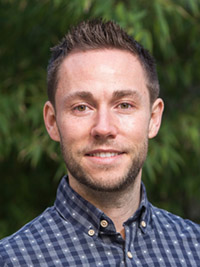Overview
Structural engineering is the science and art of designing, analysing and constructing structures. Traditional civil engineering structures include buildings, bridges, towers, and dams designed to resist seismic, wind, and gravity forces. The analytical tools developed by structural engineers, e.g., numerical analysis methods, non-linear material models, reliability theory, can be applied to a much wider range of “structure” types.
Current structural research at UBC includes analytical and experimental work in seismic engineering; mechanical properties and reliability of concrete, timber, and fiber-reinforced concrete structures; laboratory investigations of structural steel and structural concrete behaviour; numerical analysis of continua, expert systems and computer graphics.
Graduate courses are available in static and dynamic analysis, structural design, and reliability theory. The former include matrix structural analysis, advanced topics in nonlinear finite element methods, mechanics of continua, dynamics of structures, plates and shells. The latter include applications to prestressed and reinforced concretes, steel, timber, seismic design, and composite structures.
Key Areas
- Shake table studies of building models and components;
- Field vibration measurements of existing bridges and buildings;
- Seismic control by passive and semi-active dampers, and base isolation of structures;
- Pseudo-dynamic testing of large-scale concrete bridge bents;
- Retrofit of concrete beam-column joints;
- Seismic response of structures with steel plate or timber shear walls and timber frames;
- Decision analysis for seismic retrofit strategies;
- Regional damage estimation due to earthquakes;
- Development of software for seismic risk, structural stability, and non-linear seismic response;
- Reliability of structures with non-rigid connections;
- Soil-pile and soil-structure interaction under seismic loading;
- Seismic soil amplification and liquefaction effects;
- Seismic analysis and retrofit of water and mine waste dams;
- Seismic response analysis of soil structures, and characterization of ground improvements; and,
- Site characterization for liquefaction and residual strength.
Media Highlights
- UBC Civil In The Media – 7.4 magnitude earthquake hits Taiwan
- UBC Civil Faculty Among Recipients of Research Excellence Clusters Funded for 2024/25
- Trevor Carey – Developing Predictive Models To Predict The Impact Of A 9.0 Earthquake
- Revolutionizing Affordable Housing: Dr. Tony Yang’s Research on Reinforcing Concrete Construction with Welded Wire Mesh
Specialization Requirements
Please visit the MEng / MASc / PhD pages for degree-specific coursework regulations.
Courses are chosen from the Graduate Courses list below, or by securing Specialty Advisor / Supervisor approval for other courses.
| MEng1 | MASc2 | PhD3 | |
|---|---|---|---|
| Core courses (credits) | 24 | 6 | 9 |
| Elective courses (credits) | 6 | 12 | 3 |
| Seminar course | CIVL 597-004 | CIVL 597-004 | CIVL 597-004 |
| Thesis course | N/A | CIVL 599 | CIVL 699 |
1MEng students must as core coursework take at least 8 (eight) 500-level courses from the list of graduate courses below.
2MASc students must as core coursework take at least 2 of the courses CIVL 507, CIVL 518, and CIVL 537.
3PhD students must as core coursework take all of the courses CIVL 507, CIVL 518, and CIVL 537. The credit numbers listed above for the PhD program assumes credit exemption for 18 credits obtained in a Master’s program; that must be approved by the research supervisor.
Undergraduate students who are interested in Structural & Earthquake Engineering are directed to the following courses:
- CIVL 432
- CIVL 433
- CIVL 435
- CIVL 436
- CIVL 437
- CIVL 439
Graduate Courses
| Courses | Credits | Term | |
| CIVL 504 | Seismicity and Seismic Design Parameters | 3 | 1 |
| CIVL 505 | Seismic Response of Structures | 3 | 2 |
| CIVL 506 | Seismic Design of Structures | 3 | 1 |
| CIVL 507 | Dynamics of Structures I | 3 | 1 |
| CIVL 508 | Dynamics of Structures II | 3 | 2 |
| CIVL 509 | Nonlinear Structural Analysis | 3 | 2 |
| CIVL 511 | Advanced Topics in Steel Structures | 3 | 1 |
| CIVL 513 | Concrete Structures | 3 | 2 |
| CIVL 516 | Behaviour of Timber Structures | 3 | 2 |
| CIVL 518 | Reliability and Structural Safety | 3 | 1 |
| CIVL 537 | Computational Mechanics I | 3 | 1 |
| CIVL 538 | Computational Mechanics II | 3 | 2 |
| CIVL 580 | Geotechnical Earthquake Engineering | 3 | 1 |
| CIVL 598M | Design Masonry Structures | 3 | 1 |
Questions?
To learn more about Structural & Earthquake Engineering at UBC, please contact Dr. Tony Yang
People
Facilities
Our Structures Laboratory contains a large reaction floor which can be used with various moveable reaction frames and hydraulic loading systems for quasi-static testing of large-scale structural components. We have two universal testing machines and two MTS servo-controlled loading systems, with a range of jacks suitable for programmed cyclic and fatigue testing.
The Earthquake Engineering Research Facility (EERF) is a purpose-built, state-of-the-art facility dedicated to the study of the behaviour of structures in seismic events. There is a working lab space of 490 m2, a large conference room (30 square metres), and an open office area of about 20 square metres on a mezzanine level.
